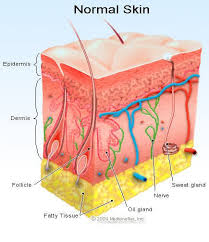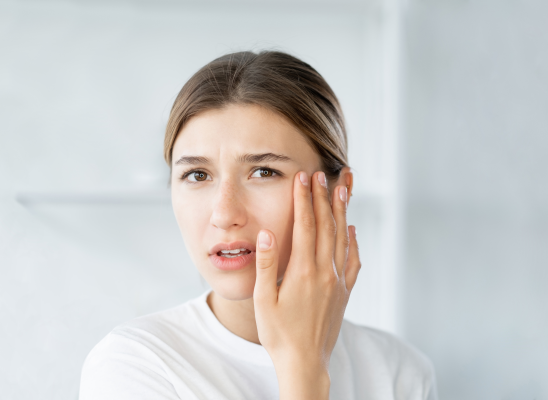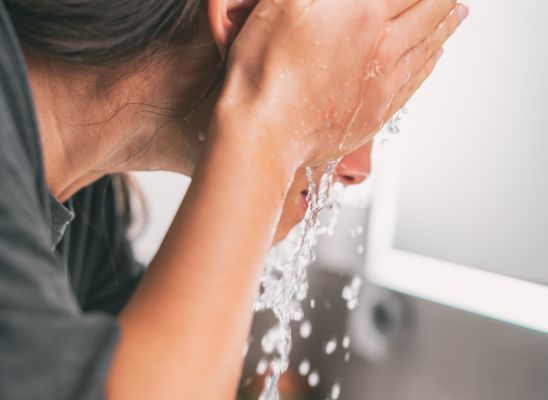The Importance of Skin Examinations

Online test
Find out the severity of your symptoms with this free online test

The bacterial tenants of the skin exist in harmony with our bodies most of the time. Skin acts as a barrier, protecting our internal systems from the dangers of those bacteria and benefiting from that bacteria in ways we do not fully understand yet. If you compulsively pick at their skin, you risk disrupting the delicate balance resulting in potentially dangerous infections. Regular skin examinations can help reduce the risk of complications due to these skin infections. However, it must be noted that self skin-examination can also be a major trigger for picking for may compulsive skin pickers. In this instance it is best to have the skin examined by a medical professional such as a GP, dermatologist or nurse.
What lives on the skin
Our skin is covered with bacteria with some research showing a ten to one ratio of bacteria to skin cells (Scharschmidt & Fischbach, 2013). Some of these bacteria are helpful to our bodies while some are harmful, yet our skin creates a physical barrier and its related immune system mechanisms usually maintain a healthy balance. Multiple factors affect that balance such as diet, overall immune health, and personal hygiene but for the most part, the potentially harmful bacteria and microbes stay on the outside of our skin where they belong. When the skin barrier is disrupted or broken, however, the harmful bacteria that normally live in harmony on the outside of the body can enter the body.
Increased risk of infection
Compulsive skin picking often results in the disruption of the protective barrier. The skin has three layers, the epidermis or outer layer, the dermis and subcutaneous fat (American Academy of Dermatology, Inc., 2017). The epidermis is the protective barrier of the skin and contains part of the immune system which keeps all the bacteria and microbes from invading your system.
The next layer which is the dermis. The epidermis protects this layer because the dermis is responsible for much activity including growing hair, regulating oil production, and bringing blood to your skin. When the epidermis is breached, the dermis is exposed. It also means that when the epidermis barrier is damaged, things from outside can reach the dermis thereby providing access to the bloodstream. Then the bloodstream carries bacteria and microbes to all of your internal systems which is why compulsive skin picking is dangerous.

image: medicine.net
Picking, poking, squeezing, or lancing the skin causes tissue damage and creates openings in the surface of the skin. Any time there is blood in association with picking behavior, the dermis is exposed. If blood can come out, anything can get into the blood.
Infections secondary to skin picking
Several cases cited in research show the dangers of skin infections due to compulsive picking. One case involved staphylococcus aureus bacteremia, a dangerous infection that is difficult to treat (Hawatmeh & Al-khateeb, 2017). The man in this case study had a history of repeatedly breaking the skin and damaging tissue by picking and allowed the dangerous bacteria into his body. Staphylococcus aureus is one of those bacteria that can be found on moist skin sites and usually does not cause problems unless the skin barrier is broken (Scharschmidt & Fischback, 2013). Once staphylococcus is in the bloodstream, it is difficult to treat and can sometimes develop into more serious conditions such as osteomyelitis (infection of the bone), infective endocarditis (infection of the surface of the heart), and even death.
Another case involved a woman who repeatedly picked at her hairline which eventually resulted in a large ulcer. She began experiencing headaches, dizziness, and memory loss. Her picking behaviors with a metal instrument into her scalp resulted in an ulcerated wound that caused intracranial infection and encephalomalacia (or softening of brain tissue) which required surgery (Kim, Garrison, & Thompson, 2013). Following surgery and extensive antibiotic treatment, she recovered, however this serves as an example that infections secondary to picking can present with different symptoms.
Get your skin examined
The good news is that both patients in the case studies sought treatment early and the conditions they experienced were reversed. Both cases, however, involved infections that would have developed into serious problems if they were not caught early. In some cases, symptoms of skin infection are not obvious or dramatic, therefore, if your skin picking behaviors result in frequent skin damage, be proactive and have a dermatologist evaluate your skin regularly. Many people find it difficult to go to health providers and talk about their picking behaviors, so find a nonjudgmental provider and take a support person with you.
Tips to prevent infection
- Get therapy or involved with a skin picking recovery program to reduce skin picking behaviors.
- Keep skin undamaged.
- Keep skin clean.
- If a skin injury occurs, clean it with soap and water and cover with a sterile bandage. Petrolatum or Vaseline can be used to keep the tissue moist and create a barrier so bacteria cannot get in.
- Observe the wound for signs of infection: redness, irritation, pain, itchiness, swelling, boils, rash or pus.
- Notice internal signs of infection such as headaches, fever, nausea, vomiting, muscle aches, rash, diarrhea, or fatigue.
- If you have any medical issues or take medication that compromises your immune system, pay very close attention to the injury and get it checked by a physician.
References
American Academy of Dermatology, Inc. (2017). The layers of your skin. Retrieved from https://www.aad.org/public/kids/skin/the-layers-of-your-skin
Hawatmeh, A. & Al-khateeb, A. (2017). An unusual complication of dermatillomania. Quant Imaging Med Surg, 7(1), 166-168. doi: 10.21037/qims.2016.12.02
Kim, D. I., Garrison, R. C., & Thompson, G. (2013). A near fatal case of pathological skin picking. American Journal of Case Reports, 14, 284-287. doi: 10.12659/AJCR.889357
Scharschmidt, T. C. & Fischback, M. A. (2013). What lives on our skin: Ecology, genomics and therapeutic opportunities of the skin microbiome. Drug Discovery Today Dis Mech., 10, 3-4. doi: 10.1016/j.ddmec.2012.12.003.
Online test
Find out the severity of your symptoms with this free online test
Start your journey with SkinPick
Take control of your life and find freedom from skin picking through professional therapy and evidence-based behavioral techniques.
Start Now



